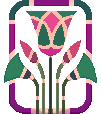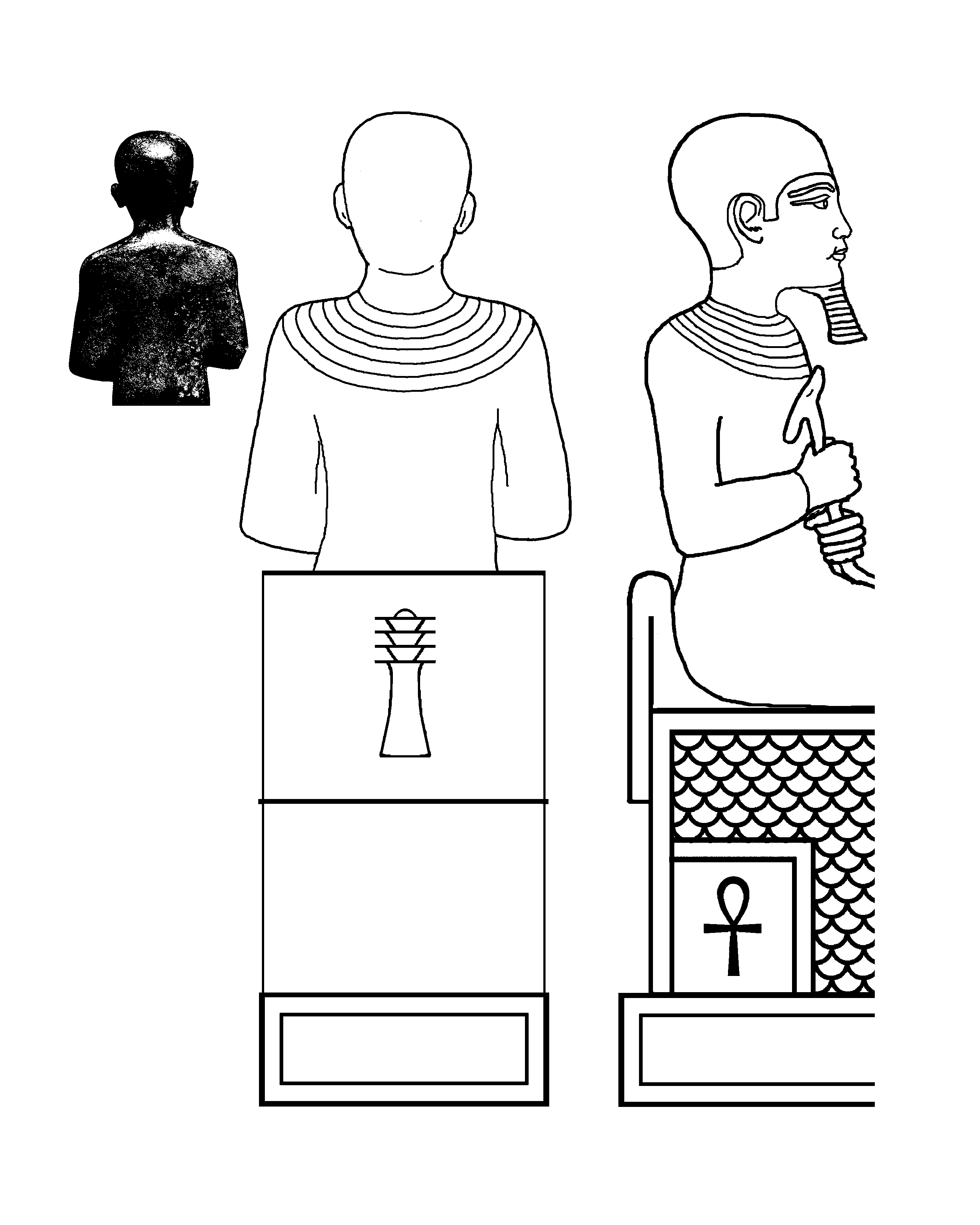
Tomb of Raia and Mutemwia, Saqqara, New Kingdom
Traced from a photo in _The Hidden Tombs of Memphis_, by Geoffrey T. Martin
 Tomb of Raia and Mutemwia, Saqqara, New Kingdom Traced from a photo in _The Hidden Tombs of Memphis_, by Geoffrey T. Martin |
|
Thumbing through this book, I was pleased to find a scene with both Hathor and Ptah. So I wasted no time in scanning it. The book already had its own trace, but even if it had scanned better, I still wanted to do my own. Martin thinks Raia is being shown as blind, but I think the shut eyes merely indicates the musician is so into the music, they shut their eyes. Also, if Raia's song was a prayer, his eyes could be closed to better focus on the spiritual world? Ptah grasps the Was scepter, while Hathor, named "mistress of the sycamore", offers the menat necklace with one hand, and holds an ankh with the other. Ptah is named "Lord of ma'at" in the glyphs directly above the flower offering. I don't know what the glyphs say above that, though. Meanwhile, onto other things Ptah. I've been working on a statue design for Ptah ever since May 2014. It got put aside for a statue of Hathor, which has since been gloriously realized. Being the greedy, acquisitive creature that I am :), I went back to the Ptah statue's ideation. And a good thing, because it's needed many changes. I opted not to have Ptah grasping the Djed pillar, in order to enlarge the Set-headed Was scepter, meaning "power". But then realized it should have the Djed, meaning "stability", so that the statue could also represent Ptah-Sokar-Osiris. I didn't want to change the front, so I decided to place it on the back of the statue:

"In BD Spell 142S variation 4, Ptah is in fact called 'the August Djed in the House of Re'." (Andrew Gordon and Calvin Schwabe, _The Quick And The Dead: Biomedical Theory In Ancient Egypt__, page 118) Gordon and Schwabe speak of "This link of the djed with the backbone and vertebrae" and and show an illustration of the "Djed immediately behind (bracing, giving added stability to?) the spine of the creator god Ptah." (_TQatD_, pages 117-118) Horemheb's tomb (KV57) has such a Ptah:
 Original photo by © William Petty) Coffin Texts Spell 532 reveals: "'I have received my spinal cord through Ptah-Sokar, my mother has given me her hidden power.'"(_TQatD_, page 188) Could that mother have been understood to be Hathor? "Here we will but mention in passing the Egyptians' paramount cow-mother goddess Hathor. As 'Lady of Life', she was responsible for giving life to all creatures (LÄ II 1025 and notes 23-24)."(_TQatD_, page 27) Having mentioned that "in passing", yes the statue really needs a Djed pillar. While I am saving money, I may find more revisions are necessary for that statue. :)
(Note of July 18, 2015) |
Forward...
Go Back to Archives...
Go Back to Main Journal Index Page...
Go to Index of Joan's pages...
![]()
© Joan Ann Lansberry